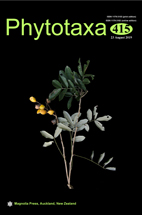Abstract
The monotypic genus Pseudodichanthium Bor (1940: 272) is represented by the species Pseudodichanthium serrafalcoides (Cooke & Stapf 1908: 450) Bor (1940: 272) occurring in India and the Oman (Clayton et al. 2006). In India, the species is distributed in the Ahmednagar, Khandala, Kolhapur, Mahableshwar, Pune, Purandhar Fort, Raigad, Ratnagiri and Satara. Singh et al. (2015) have been reported this genus as endemic to India. The present investigation reveals that it is not endemic to India, and also occurs in the Saharo-Arabian region, in the country of Oman (Ghazanfar, 1992). The single species, P. serrafalcoides, is found in monsoon forests. Oman tends to have affinities with India in terms of climate in contrast to most of the Arabian Peninsula whose affinities are closer to continental Africa. Pseudodichanthium has been derived from Dichanthium Willemet (1796: 11) because of its unusual morphology characterised by the scarious lower glumes which are broadly winged with inflexed margins.

